- Home
- Neil Gaiman
Stories: All-New Tales ngss-1 Page 31
Stories: All-New Tales ngss-1 Read online
Page 31
But this was serious. The more I observed, the more clear the symptoms. The stiffness of posture, the utter lack of humor or enjoyment in what she was doing with her lesson plan, lack of pleasure in the drink, the anger, the twitchy obsessive way she wrote.
And the eyes. That’s what speaks the most, to me at least.
The eyes…
So I decided to give it a try. I stood to get a refill of latte and, walking back to my table, I dropped a napkin onto hers. I apologized and collected it. Then laughed, looking at her handiwork.
“My girlfriend’s a teacher,” I said. “She absolutely hates lesson plans. She’s never quite sure what to do with them.”
She didn’t want to be bothered, but even people in her state acknowledge some social conventions. She looked up, the troubled eyes a deep brown. “They can be a chore. Our school board insists.”
Clumsy, but at least it broke the ice and we had a bit of a conversation.
“I’m Martin Kobel.”
“Annabelle Young.”
“Where do you teach?”
It was in Wetherby, a good-size town in central North Carolina about an hour from Raleigh. She was here for an education conference.
“Pam, my girlfriend, teaches grade school. You?”
“Middle school.”
The most volatile years, I reflected.
“That’s the age she’s thinking of moving over to. She’s tired of six-year-olds…You put a lot into that,” I said, nodding at the plan.
“I try.”
I hesitated a moment. “Listen, kind of fortuitous I ran into you. If I gave you our phone number and you’ve got a few minutes-I mean, if it’s no imposition-would you think about giving Pam a call? She could really use some advice. Five minutes or so. Give her some thoughts on middle school.”
“Oh, I don’t know. I’ve only been a teacher for three years.”
“Just think about it. You seem like you know what you’re doing.” I took out a business card.
Martin J. Kobel, MS, MSW
Behavioral Therapy
Specialties: Anger Management and Addiction
I wrote “Pam Robbins” on the top along with the home phone number.
“I’ll see what I can do.” She slipped the card in her pocket and turned back to her coffee and the lesson plan.
I knew I’d gone as far as I could. Anything more would have seemed inappropriate and pushed her away.
After fifteen minutes, she glanced at her watch. Apparently whatever conference she was attending was about to resume. She gave a chill smile my way. “Nice talking to you.”
“The same,” I said.
Annabelle gathered the lesson plan and notes and stuffed them back into her gym bag. As she rose, a teenage boy eased past and jostled her inadvertently with his bulky backpack. I saw her eyes ripple with that look I know so well. “Jesus,” she whispered to him. “Learn some manners.”
“Hey, lady, I’m sorry-”
She waved a dismissing hand at the poor kid. Annabelle walked to the counter to add more milk to her coffee. She wiped her mouth and tossed out the napkin. Without a look back at me or anyone she pointed her cold visage toward the door and pushed outside.
I gave it thirty seconds then also stopped at the milk station. Glancing into the hole for trash, I spotted, as I’d half expected, my card, sitting next to her crumpled napkin. I’d have to take a different approach. I certainly wasn’t going to give up on her. The stakes for her own well-being and of those close to her were too high.
But it would require some finesse. I’ve found that you can’t just bluntly tell potential patients that their problems are the result not of a troubled childhood or a bad relationship, but simply because an invisible entity had latched onto their psyches like a virus and was exerting its influence.
In a different era, or in a different locale, someone might have said that the teacher was possessed by a demonic spirit or the like. Now we’re much more scientific about it, but it’s still wise to ease into the subject slowly.
ANNABELLE YOUNG HAD COME under the influence of a neme.
The term was first coined by a doctor in Washington, D.C. James Pheder was a well-known biologist and researcher. He came up with the word by combining “negative” and “meme,” the latter describing a cultural phenomenon that spreads and replicates in societies.
I think a reference to meme-“m” version-is a bit misleading, since it suggests something rather more abstract than what a neme really is. In my lengthy book on the subject, published a few years ago, I define a neme as “a discrete body of intangible energy that evokes extreme emotional responses in humans, resulting in behavior that is most often detrimental to the host or to the society in which he or she lives.”
But “neme” is a convenient shorthand and every therapist or researcher familiar with the concept uses it.
The word is also beneficial in that it neutrally describes a scientific, proven construct and avoids the historical terms that have muddied the truth for thousands of years. Words like ghosts, spirits, Rudolf Otto’s numinous presences, revenants, Buddhism’s hungry ghosts, rural countrysides’ white ladies, Japanese yurei, demons. Dozens of others.
Those fictional legends and superstitions were largely the result of the inability to explain nemes scientifically in the past. As often happens, until a phenomenon is rationally explained and quantified, folklore fills the gaps. The old belief, for instance, in spontaneous generation-that life could arise from inanimate objects-was accepted for thousands of years, supported by apparently scientific observations, for instance, that maggots and other infestations appeared in rotting food or standing water. It was only when Louis Pasteur proved via controlled, repeatable experiments that living material, like eggs or bacteria, had to be present for life to generate that the old view fell by the wayside.
Same thing with nemes. Framing the concept in terms of ghosts and possessing spirits was a convenient and simple fiction. Now we know better.
Growing up, I’d never heard of these things that would later be labeled nemes. It was only after a particular incident that I became aware: the deaths of my parents and brother.
You could say that my family was killed by one.
When I was sixteen we went to one of Alex’s basketball games at our school. At some point my father and I hit the hot dog stand. The father of a player on the opposing team was standing nearby, sipping a Coke and watching the game. Suddenly-I can still remember it perfectly-the man underwent a transformation, instantly shifting from relaxed and benign to tense, distracted, on guard. And the eyes…there was no doubt that they changed. The very color seemed to alter; they grew dark, malevolent. I knew something had happened, something had possessed him, I thought at the time. I felt chilled, and I stepped away from him.
Then the man suddenly grew angry. Furious. Something on the court set him off. A foul maybe, a bad call. He screamed at Alex’s team, he screamed at our coach, at the ref. In his rage, he bumped against my father and dropped his soda, spilling it on his shoes. It was his fault but he seemed to blame my father for the mishap. The men got into an argument, though my father soon realized that the man was out of control, consumed by this odd rage, and ushered us back to the bleachers.
After the game I was still troubled but assumed the matter was over. Not so. The man followed us out into the parking lot and, screaming, bizarrely challenged my father to a fight. The man’s wife was crying, pulling him back and apologizing. “He’s never behaved like this, really!”
“Shut up, bitch,” he raged and slapped her.
Shaken, we climbed into the car and drove off. Ten minutes later, driving down I-40, we were sitting in troubled silence when a car veered over three lanes. The man from the game swerved right toward us, driving us off the road.
I remember seeing his face, twisted with anger, over the steering wheel.
In court he tearfully explained that he didn’t know what happened. It was like he was possessed.
That defense didn’t get him very far. He was found guilty of three counts of first-degree manslaughter.
After I got out of the hospital following the crash, I couldn’t get out of my head the memory of what had happened to the man. How clear it was to me that he’d changed, in a flash. It was like flipping a light switch.
I began reading about sudden changes in personality and rage and impulse. That research led eventually to the writings of Dr. Pheder and other researchers and therapists. I grew fascinated with the concept of nemes, considered a theory by some, a reality by others.
As to their origin, there are several theories. I subscribe to one I found the most logical. Nemes are vestiges of human instinct. They were an integral part of the psychological makeup of the creatures in the chain that led to Homo sapiens and were necessary for survival. In the early days of humanoids, it was occasionally necessary to behave in ways we would consider bad or criminal now. To commit acts of violence, to be rageful, impulsive, sadistic, greedy. But as societies formed and developed, the need for those darker impulses faded. The governing bodies, the armies, the law enforcers took over the task of our survival. Violence, rage, and the other darker impulses became not only unnecessary but were counter to society’s interests.
Somehow-there are several theories on this-the powerful neuro impulses that motivated those dark behaviors separated from humans and came to exist as separate entities, pockets of energy, you could say. In my research I found a precedent for this migration: the same thing happened with telepathy. Many generations ago, psychic communication was common. The advent of modern communication techniques eliminated the need for what we could call extrasensory perception, though many young children still have documented telepathic skills. (However, it’s interesting that with the increased use of cell phones and computers by youngsters, incidents of telepathy among young people are dramatically decreasing.)
But whatever their genealogy, nemes exist and there are millions of them. They float around like flu viruses until they find a vulnerable person and then incorporate themselves into the psyche of their host (“incorporate” is used, rather than a judgmental term like “infest” or “infect,” and never the theologically loaded “possess”). If someone is impulsive, angry, depressed, confused, scared-even physically sick-nemes will sense that and make a beeline for the cerebrum cortex, the portion of the brain where emotion is controlled. They usually avoid people who are emotionally stable, strong willed, and have high degrees of self-control, though not always.
Nemes are invisible, like electromagnetic waves and light at the far end of the spectrum, though it’s sometimes possible to tell they’re nearby if you hear distortion on a cell phone, TV, or radio. Usually, the host doesn’t sense the incorporation itself; they only experience a sudden mood swing. Some people can outright sense them. I’m one of these, though there’s nothing “special” about me. It’s simply like having acute hearing or good eyesight.
Do nemes think?
They do, in a way. Though thought is probably the wrong word. More likely they’re like insects, with a sense of awareness and instinct. Survival is very strong within them, too. There’s nothing immortal about nemes. When their host passes away, they seem to dissipate also. I myself don’t believe they communicate with one another, since I’ve never seen any evidence that they do.
This isn’t to minimize the damage they can do, of course. It’s significant. The rage, the impulsive behavior that arises from incorporation leads to rape, murder, physical and sexual abuse, and more subtle harm like substance overuse and verbal abuse. They also affect the physiology and morphology of the host’s body itself, as a series of autopsies several years ago proved.
After my devastating personal encounter with nemes, I decided I wanted to work in a field that would help minimize the damage they could do. I became a therapist.
The thrust of my approach is behavioral. Once you’re under the influence of a neme, you don’t “cast it out,” as a practitioner (now former) unfortunately joked at a psychotherapy conference in Chicago some years ago. You treat the symptoms. I concentrate on working with my patients to achieve self-control, using any number of techniques to avoid or minimize behaviors that are destructive to them or others. In most cases it doesn’t even matter that the patient knows he or she is a host for a neme (some patients are comfortable with the reality, and others aren’t). In any case, the methods I use are solid and well established, used by all behavioral therapists, and by and large successful.
There’ve been occasional defeats, of course. It’s the nature of the profession. Two of my patients, in which very potent nemes had incorporated, killed themselves when they were simply unable to resolve the conflict between their goals and the neme-influenced behavior.
There’s also something that’s been in the back of my mind for years: risk to myself. My life has been devoted to minimizing their electiveness and spread and so I sometimes wonder if a neme senses that I’m a threat. This is probably according them too much credit; you have to guard against personifying them. But I can’t help but think back to an incident several years ago. I was attending a psychology conference in New York City and was nearly mugged. It was curious since the young attacker was a model student at a nice high school near my hotel. He’d never been in trouble with the police. And he was armed with a long knife. An off-duty policeman happened to be nearby and managed to arrest him just as he started after me with the weapon.
It was late at night and I couldn’t see clearly, but I believed, from the boy’s eyes, that he was being influenced by a neme, motivated by its own sense of survival to kill me.
Probably not. But even if there was some truth to it, I wasn’t going to be deterred from my mission to save people at risk.
People like Annabelle Young.
THE DAY AFTER RUNNING into her in Starbucks, I went to the North Carolina State University library and did some research. The state licensing agencies’ databases and ever-helpful Google revealed that the woman was thirty years old and worked at Chantelle West Middle School in Wetherby County. Interestingly, she was a widow-her husband had died three years ago-and, yes, she had a nine-year-old son, probably the target of her anger on the phone. According to information about the school where she taught, Annabelle would generally teach large classes, with an average of thirty-five students per year.
This meant that she could have a dramatic and devastating impact on the lives of many young people.
Then too was the matter of Annabelle’s own well-being. I was pretty sure that she’d come under the influence of the neme around the time her husband died; a sudden personal loss like that makes you emotionally vulnerable and more susceptible than otherwise. (I noted too that she’d gone back to work around that time, and I wondered if her neme sensed an opportunity to incorporate within someone who could influence a large number of equally vulnerable individuals, the children in her classes.)
Annabelle was obviously a smart woman and she might very well get into counseling at some time. But there comes a point when the neme is so deeply incorporated that people actually become accustomed or addicted to the inappropriate behaviors nemes cause. They don’t want to change. My assessment was that she was past this point. And so, since I wasn’t going to hear from her, I did the only thing I could. I went to Wetherby.
I got there early on a Wednesday. The drive was pleasant, along one of those combined highways that traverse central North Carolina. It split somewhere outside of Raleigh and I continued on the increasingly rural branch of the two, taking me through old North Carolina. Tobacco warehouses and small industrial-parts plants-most of them closed years ago-but still squatting in weeds. Trailer parks, very unclosed. Bungalows and plenty of evidence of a love of Nascar and Republican party lines.
Wetherby has a redeveloped downtown, but that’s just for show. I noted immediately as I cruised along the two-block stretch that nobody was buying anything in the art galleries and antiques stores, and the nearly em
pty restaurants, I suspected, got new awnings with new names every eight months or so. The real work in places like Wetherby got done in the malls and office parks and housing developments built around new golf courses.
I checked into a motel, showered, and began my reconnaissance, checking out Chantelle Middle School. I parked around the time I’d learned classes were dismissed but didn’t catch a glimpse of Annabelle Young.
Later that evening, about seven thirty, I found her house, four miles away, a modest twenty-year-old colonial in need of painting, on a cul-de-sac. There was no car in the drive. I parked under some trees and waited.
Fifteen minutes later a car pulled into the drive. I couldn’t tell if her son was inside or not. The Toyota pulled into the garage and the door closed. A few minutes later I got out, slipped into some woods beside the house, and glanced into the kitchen. I saw her carting dishes inside. Dirty dishes from lunch or last night, I assumed. She set them in the sink and I saw her pause, staring down. Her face was turned away but her body language, even from this distance, told me that she was angry.
Her son appeared, a skinny boy with longish brown hair. His body language suggested that he was cautious. He said something to his mother. Her head snapped toward him and he nodded quickly. Then retreated. She stayed where she was, staring at the dishes, for a moment. Without even rinsing them she stepped out of the room and swept her hand firmly along the wall, slapping the switch out. I could almost hear the angry gesture from where I was.
I didn’t want to talk to her while her son was present, so I headed back to the motel.

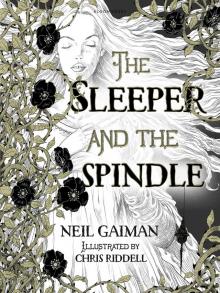 The Sleeper and the Spindle
The Sleeper and the Spindle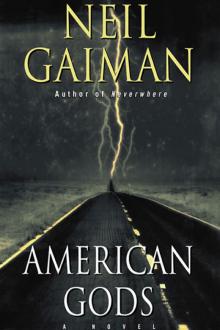 American Gods
American Gods Coraline
Coraline The Sandman: Book of Dreams
The Sandman: Book of Dreams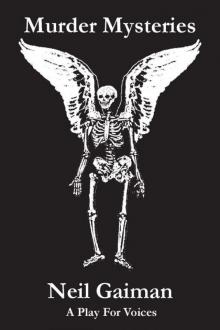 Murder Mysteries
Murder Mysteries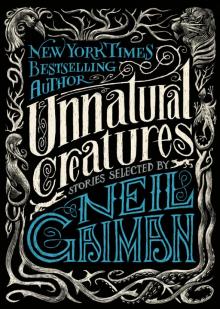 Unnatural Creatures
Unnatural Creatures Eternity's Wheel
Eternity's Wheel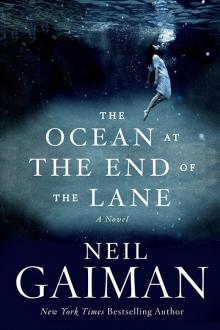 The Ocean at the End of the Lane
The Ocean at the End of the Lane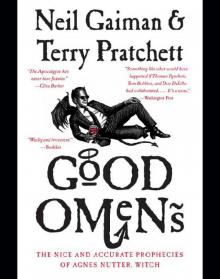 Good Omens
Good Omens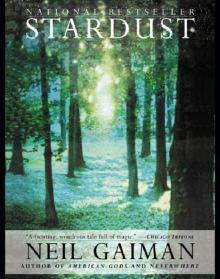 Stardust
Stardust Odd and the Frost Giants
Odd and the Frost Giants The Graveyard Book
The Graveyard Book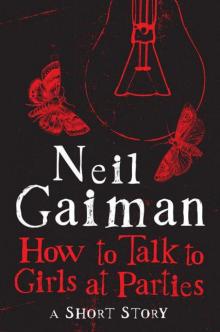 How to Talk to Girls at Parties
How to Talk to Girls at Parties Neverwhere
Neverwhere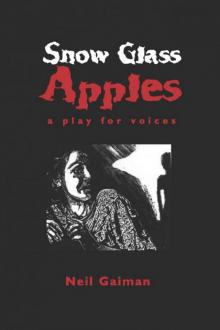 Snow, Glass, Apples
Snow, Glass, Apples Anansi Boys
Anansi Boys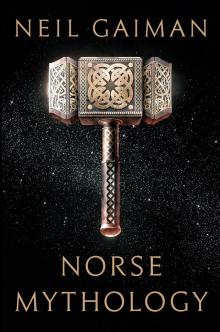 Norse Mythology
Norse Mythology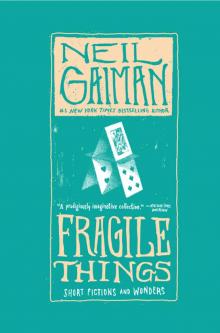 Fragile Things: Short Fictions and Wonders
Fragile Things: Short Fictions and Wonders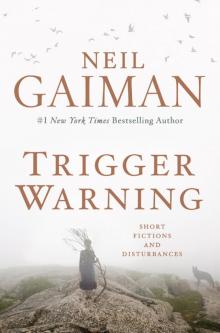 Trigger Warning: Short Fictions and Disturbances
Trigger Warning: Short Fictions and Disturbances InterWorld
InterWorld The Monarch of the Glen
The Monarch of the Glen The Neil Gaiman Reader
The Neil Gaiman Reader The Silver Dream
The Silver Dream Stories
Stories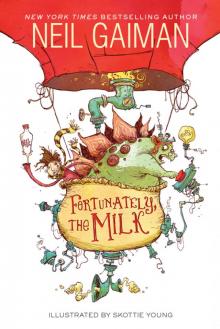 Fortunately, the Milk
Fortunately, the Milk Art Matters
Art Matters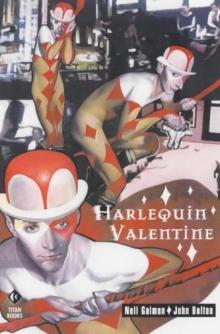 Harlequin Valentine
Harlequin Valentine The Quite Nice and Fairly Accurate Good Omens Script Book
The Quite Nice and Fairly Accurate Good Omens Script Book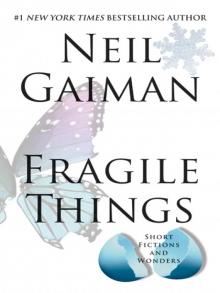 Fragile Things
Fragile Things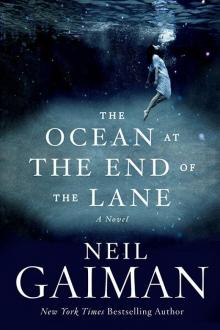 The Ocean at the End of the Lane: A Novel
The Ocean at the End of the Lane: A Novel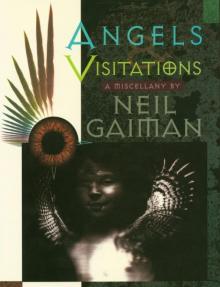 Angels and Visitations
Angels and Visitations Stories: All-New Tales ngss-1
Stories: All-New Tales ngss-1 Don't Panic
Don't Panic Darker Terrors
Darker Terrors Neil Gaiman Young Readers' Collection
Neil Gaiman Young Readers' Collection A Study In Emerald
A Study In Emerald The Silver Dream: An InterWorld Novel
The Silver Dream: An InterWorld Novel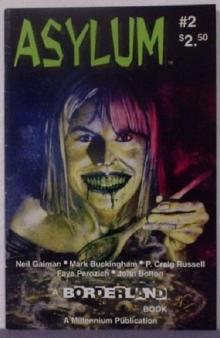 Feeders and Eaters
Feeders and Eaters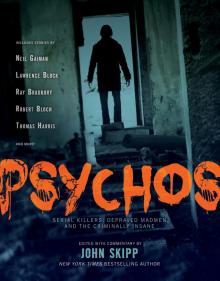 Psychos
Psychos The View from the Cheap Seats
The View from the Cheap Seats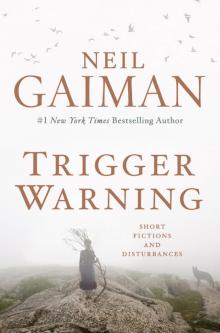 Trigger Warning
Trigger Warning Beowulf
Beowulf Nessun Dove
Nessun Dove Doctor Who: Nothing O'Clock: Eleventh Doctor: 50th Anniversary
Doctor Who: Nothing O'Clock: Eleventh Doctor: 50th Anniversary The Book of Cthulhu
The Book of Cthulhu